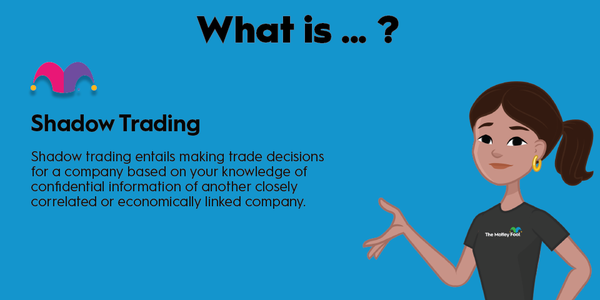Storj (STORJ 0.84%) is a decentralized cloud storage network. While traditional cloud storage services operate their own data centers, Storj takes a different approach. It lets anyone run the Storj software, operate a node on the network, and contribute their extra hard drive space.

For users, Storj offers a private and secure storage solution. It also provides a way for people to get paid for their extra storage space in the network's STORJ utility token. In our Storj guide, we'll go into more detail on how it works and its potential as an investment.
What makes Storj unique?
Storj takes the decentralization model that's used by cryptocurrencies and applies it to the data storage industry.
Its system is called the Storj DCS, short for “decentralized cloud storage.” It consists of nodes that are providing their unused hard drive space. Storj pays nodes for their resources with its STORJ tokens. Anyone with hardware that meets the Storj requirements can operate a node.
Storj also has unique advantages as a cloud storage network over the traditional options. When you use Storj, it automatically encrypts your files before uploading them. The data is then split into 80 pieces and distributed to 80 separate nodes, all with different operators across a global network. Storj only needs 29 of 80 pieces to retrieve your encrypted data, which protects you in the event of any nodes going offline.
To sum it up, Storj allows you to store your data across a distributed network. Since data is encrypted and split into small pieces, there's no way for anyone else to access it. This also protects against data breaches.
Where Storj came from
Shawn Wilkinson and John Quinn founded Storj and Storj Labs, the organization that manages the project, in 2014. The Storj team released multiple white papers that year and also held a public crowdsale that raised 910 Bitcoin (BTC -2.47%), which was worth approximately $461,802 at the time. Crowdsale participants received early access to Storj's apps.
The first version of the Storj cryptocurrency was called Storjcoin X (SJCX). It was discontinued in 2017, and Storj Labs held an initial coin offering (ICO) for its new STORJ tokens in May of that year, raising $30 million. SJCX holders were eligible to convert those tokens into STORJ at a 1:1 ratio through December 2017. After a series of developer and alpha releases, a production version of Storj was publicly released in December 2019.
How Storj works
The Storj network has three main components:
- Storage nodes: The storage nodes store and return data. Any device that meets the Storj prerequisites can be operated as a storage node.
- Uplinks: The uplink is the software that uploads and retrieves data. Storage clients run this software on their machines.
- Satellites: The satellites serve as a mediator between storage nodes and the uplinks, and they handle a range of functions. These include determining which storage nodes will store what data, paying storage nodes, and housing Storj's reputation database.
The three components work together to ensure private, secure data storage on the Storj network. Here's how the storage process itself works when a client uploads their data:
- Storj DCS automatically encrypts the data.
- The client's uplink gets permission from its satellite to store the data.
- The encrypted data is split into 80 encrypted pieces.
- The satellite finds 80 storage nodes to store the data.
Storj clients can pay for storage either in STORJ tokens or with a credit card. Storage nodes receive payments in STORJ tokens.
Clients can retrieve their data at any time, and it only takes 29 out of 80 pieces to reconstruct the encrypted file. The Storj network also has an automatic repair process when too many pieces of a file are lost, and it repairs them to a healthy margin of safety.
Storj conducts regular audits of storage nodes and monitors how long they're offline. Each node has an audit score and an online score based on this information. If a node fails too many audits or is offline for too long, it will be suspended or disqualified from hosting on the Storj network.
Partnerships
Storj has established various partnerships with organizations in need of storage. For an idea of who's working with Storj, here are a few of its partners:
- The Internet Archive collaborated with Storj to store its LibriVox Audio Collection of free, public domain audiobooks.
- LOOMIA, a technology company that adds intelligence to everyday items, partnered with Storj to host data collected by smart products.
- MongoDB (MDB 4.83%), a database platform, allows its users to back up their data directly to Storj's Tardigrade Backup service.
- Apache Pulsar, a distributed messaging and streaming system, teamed up with Storj to use its storage service for offloading event data.
Can I make passive income with Storj?
You can make passive income with Storj by operating a storage node.
These are the hardware recommendations and minimum requirements:
- One processor core dedicated to each node service.
- Between 8 TB and 24 TB dedicated per node recommended (550 GB minimum required).
- 16 TB or more bandwidth available per month recommended (2 TB minimum required).
- 100 Mbps bandwidth upstream recommended (5 Mbps minimum required).
- 100 Mbps bandwidth downstream recommended (25 Mbps minimum required).
- Uptime (online and operational) of 99.5% per month recommended (99.3% required with maximum total downtime of five hours monthly).
Unique risks
While it's easy to see what makes Storj useful, the same isn't true with its STORJ crypto tokens, at least for token holders.
The only purpose of STORJ is paying storage nodes. If the network didn't have its own cryptocurrency for this, payments would be much more complicated and expensive. There are storage nodes around the world, so Storj would need to send small, frequent payments in many different currencies.
There's no utility for token holders outside of paying for storage on Storj. You can't stake STORJ to earn rewards on it, and it's not a governance token that gives you voting rights on the project's future.
Is Storj a good investment?
Storj provides a high-quality storage service that has gotten excellent reviews. It has also built up an impressive network of more than 14,000 nodes. However, being a node operator requires that you have not only spare storage space but also fast and reliable bandwidth with more than 99% uptime. Additionally, a portion of node operator rewards are withheld for the first nine months, with some withheld until the node "gracefully exits" the platform. So you probably won't get rich running a Storj node even if you live in an area with inexpensive electricity and internet connectivity.
The STORJ token isn't an essential part of that service for the end user, which may limit its potential as an investment. The biggest point in Storj's favor is that it offers a great product. Its storage keeps your data secure and 100% private to everyone but you, and it's very affordable, especially compared to traditional cloud storage companies. Storj also has a user-friendly website and an easy-to-understand pricing structure.
It would be nice to see Storj incorporate STORJ tokens into its service more or provide incentives for holding on to them. You might want to take a wait-and-see approach with Storj for now or invest a small amount if you really like its service.
There are other decentralized storage platforms with their own cryptocurrencies, most notably Filecoin (FIL -3.39%), Arweave (AR -7.26%), and Siacoin (SC -2.75%). It's worth checking them out to see how they compare. And, if you want some blockchain exposure but aren't sure which coins to buy, investing in cryptocurrency stocks is another way to go.
Related investing topics
How to buy Storj
If you want to buy Storj, you can find it on several of the most popular crypto exchanges. Here are a few highly rated exchanges that list Storj:
Now that you know more about Storj, you can decide if you want to invest in it. One final thing to mention is that, like other cryptocurrencies, Storj has been volatile. If you invest, commit to holding for at least five years, and don't let short-term price changes convince you to make any rash decisions.




































































































